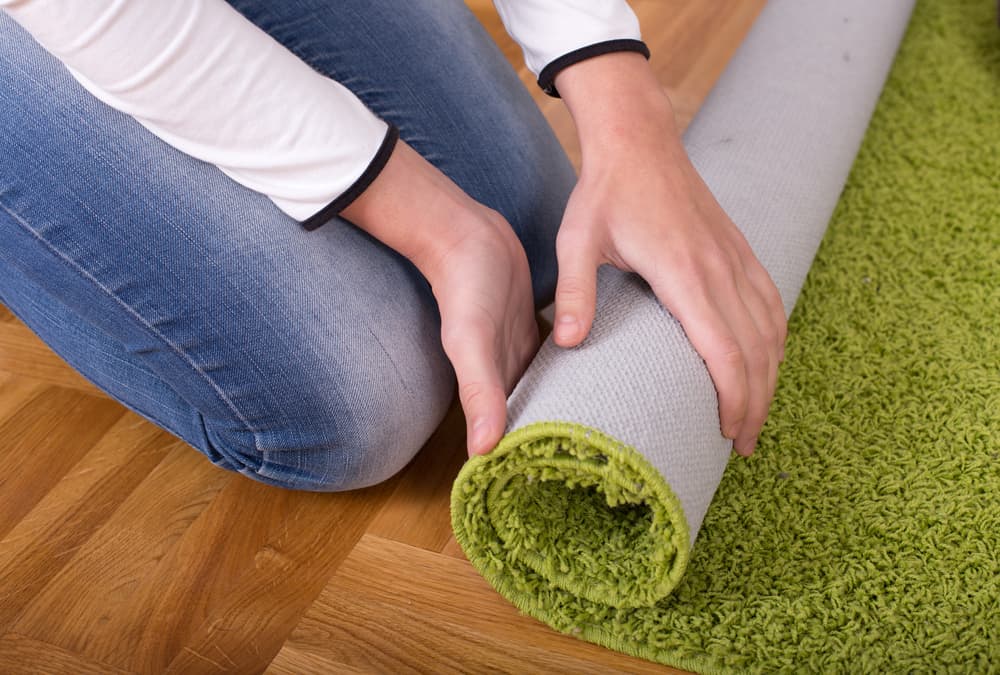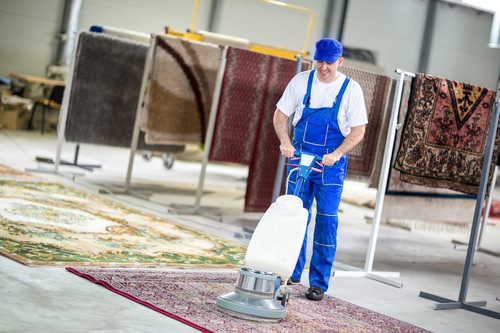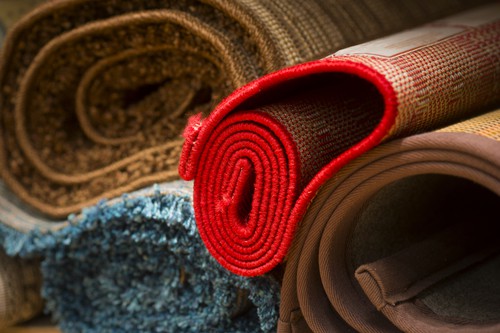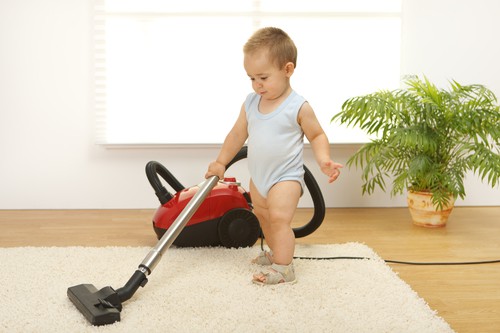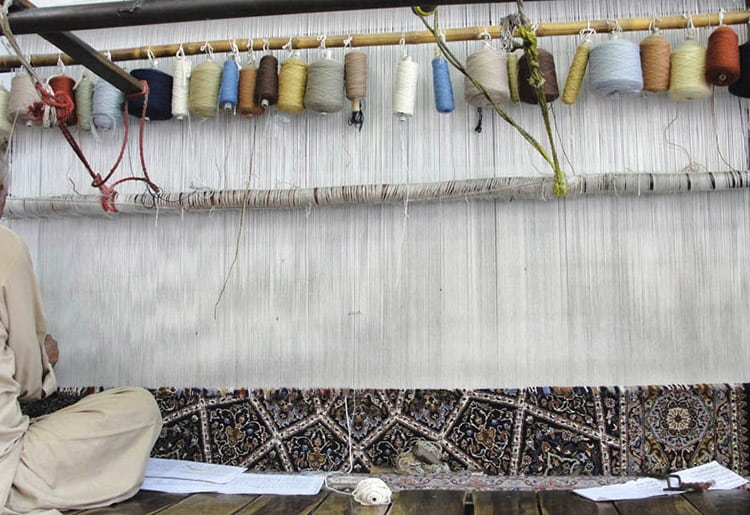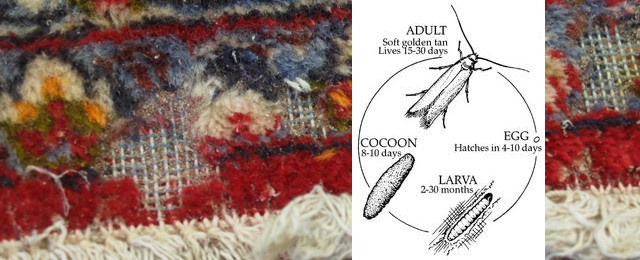Whatever the case, storing your rugs properly is key to having them for a really long time. And, truth be told, if you have inherited a great (authentic) Oriental rug (or own one), you definitely need to provide all the care in the world to keep that precious asset in mint condition. Improper rug storage can lead to bug infestation, which is sheer nightmare, as well as water damage, nasty odours and more. To keep your rugs safe and well protected, here are some things to know to become an expert at rug storage yourself!
1. Give it a Good Wash
Washing your rug thoroughly will remove potential bugs that hid in the fibers and remove contaminants and soil from the foundation (the back of the rug). If left for a long time in a rug, compacted soil can dry out the wefts and foundation warps, leading to dry rot (cracks). Improper cleaning can also have the same effect on the rug, due to too much soapy residue left in the fibers after improper washing of the rug. For that reason, it is important to give the rug a really good wash; not with a carpet cleaning machine as most of them just clean the surface of the rug. This is why it is strongly recommended to hand your rugs over to rug cleaning facilities, who have equipment for professional use that clean rugs deeply and also apply insect repellents on the front and back of the rug, protecting it from bug infestations.
Now, if you have small, washable braided or woven rugs (check the label), you can toss them in the washing machine (place them in a mesh laundry bag) and wash them on gentle cycle. For hand-knotted, handmade, oriental and antique rugs, it’s best to let the experts handle washing them as you could damage them if you wash them at home. The same applies to rush, sisal, grass, and coir rugs whose fibers weaken with the use of water.
Important Note: Rugs that are regularly vacuumed and washed rarely have bug infestation issues because bugs just hate it to be disturbed. When you vacuum, wash or roll up your rugs to take them to a rug cleaning facility, bugs get highly agitated and, of course afraid. In the end, they leave your rug and try to find a safer place to settle.
2. Roll it Up
It is very important to ROLL the rug rather than fold it to avoid creases that could lead to cracks in the rug. We usually advise our clients to roll their rugs with the pile facing inward because the pile (the front of the rug, where the fibers are) is more delicate that the foundation. However, you may see rugs in rug galleries rolled with the pile outward. This lessens undue stress on the foundation of the rug (when rolled for a long time) but also leaves the rug exposed to more dirt and dust so we do not recommend it.
When rolling the rug, keep it as straight as possible and roll it from the bottom end first. The bottom end is where the weaving began. Pet your rug with the nap (and not against it) and see which direction it takes you. This is the bottom end.
More fragile and delicate wool and silk rugs might need to be rolled with their pile pointing outward to save them from excess stress on their foundation.
Then, wrap the rug in paper (brown Kraft for short-term wrapping or white Tyvek* for long-term storage) or muslin and NOT plastic that does not allow the rug to breathe, especially if you are storing a wool rug, whose fibers might sweat and cause a moldy and musty smell or even mildew issues when unrolled, due to the high moisture content wool naturally has. To provide expert-level protection, you could also wrap the rug in polyurethane.
* You may reuse Tyvek paper because it is usually tear resistant. We can’t say the same for Kraft paper, though.
3. Keep it Off the Ground
Many people keep their rolled rugs on the floor, which is not a good idea as they increase the risk of making the rug an easy target for rodents and carpet beetles. And, given that most of the times rugs are stored in storage units in low-lying regions, one can understand that a flood will have devastating results on the rug. It is much safer to store it somewhere high. And, don’t forget to leave it as it rather than lay other heavy items on top, to prevent damage to the foundation and shape of the rug. If a rug cleaning facility also offers rug storage services, you should definitely benefit from it. Just do your homework first and check whether they place the rugs in climate-controlled areas.
Choose a cool, dry place to store the rug, with no exposure to natural light whatsoever. You may also consider using a dehumidifier and install blinds or shades to block light from windows. Finally, make sure you keep the area where you have stored the rug clean to prevent insects from finding the place a welcoming home to them.

Prevention is Key
Vacuuming the rugs regularly (weekly or bi-weekly), especially those that receive a lot of consistent foot traffic, can help prevent grit and dust from setting in. There is no need to go the extreme measures to keep them clean. Just vacuum the rug so that the settling dust lifts up.
However, once in every three months is it a good idea to be more invasive and vacuum the back of the rug (use the upholstery attachment), with a focus on its corners, as well as the floor underneath the rug. This will also help you detect moth larvae usually found under the rug and carpet beetles that prefer the edges of the rugs (the backside that is undisturbed and cozy-dark for them) to enjoy their feast and place their eggs on. Disturb them, and they will simply seek another safe place to go.
Also, when you store your rugs, make sure you check them once a year to ensure everything is alright. If the rug had insect repellent applied to it by a professional, it might need to be reapplied after a couple of years.
How do you store your rug? Do you wash it before you store it? Have you found a great rug cleaning product? Feel free to share in the comments below!

